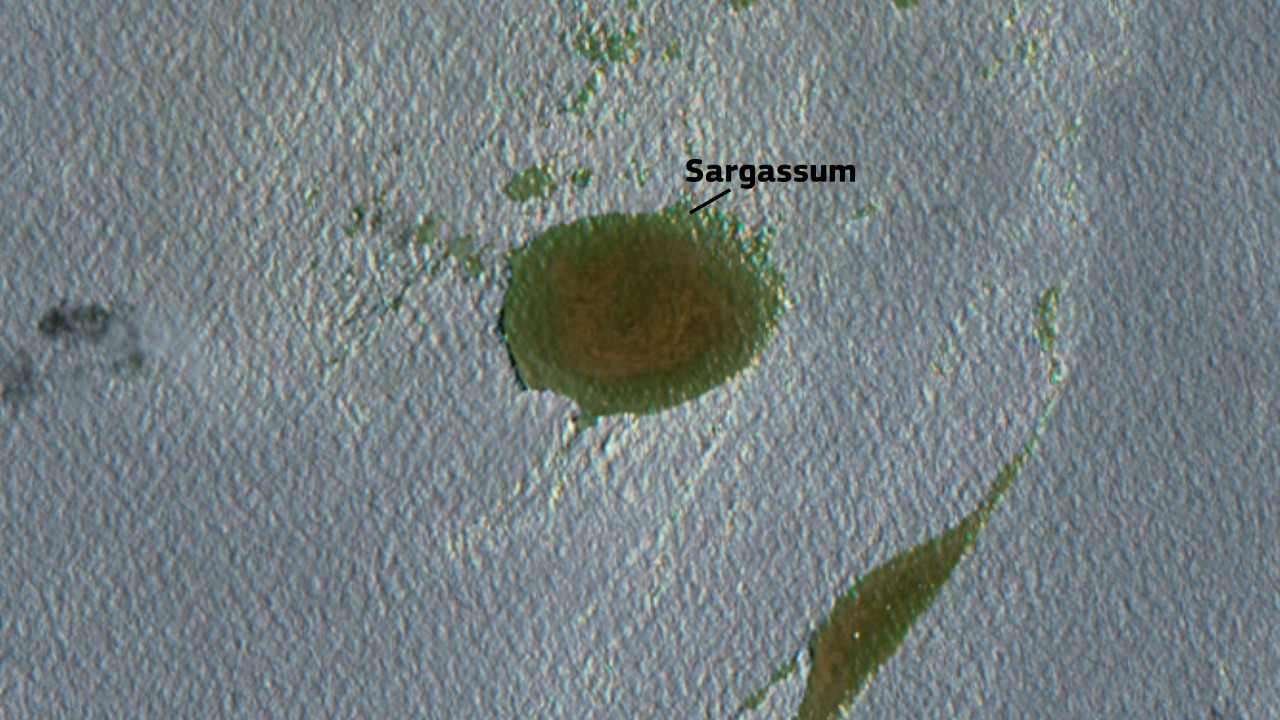
The Great Atlantic Sargassum Belt is an extraordinary oceanic phenomenon that has taken the world by storm. This colossal seaweed bloom, visible even from space, stretches across the Atlantic, fueled by nutrients from the Amazon River, agricultural fertilizers, and untreated sewage. In recent years, this sargassum influx has escalated into a persistent belt, impacting coastal regions from Africa to the Americas. Recent scientific revelations have shed light on the primary drivers behind these blooms, their rapid expansion, and the ecological implications they carry.
Defining the Great Atlantic Sargassum Belt
The Great Atlantic Sargassum Belt is essentially a floating mass of sargassum seaweed species, distinct from the traditional ecosystems of the Sargasso Sea. Its geographic scope is immense, forming a continuous stretch from West Africa to the Gulf of Mexico. During peak seasons, this belt can extend up to 5,000 miles long.
The belt exhibits seasonal variability, peaking in the summer months and dispersing via ocean currents. This dynamic nature of the belt contributes to its impact on marine ecosystems and coastal regions.
Historical Emergence of the Phenomenon
The belt first made its notable appearance in 2011, when satellite imagery detected unusual sargassum accumulations off the coast of Brazil. By 2014, this phenomenon had escalated into an annual event, with blooms covering over 7 million metric tons.
What started as sporadic patches transitioned into a persistent “belt” by 2018. This marked a significant shift in the scale and impact of the sargassum blooms.
Primary Drivers Behind Sargassum Blooms
Several factors contribute to the proliferation of these sargassum blooms. Nutrients from the Amazon River serve as a key fuel source, carried by ocean currents into the tropical Atlantic. Additionally, runoff from agricultural fertilizers significantly contributes to nutrient enrichment, promoting the growth of sargassum.
Untreated sewage from coastal populations also acts as an additional nutrient driver, further facilitating the rapid expansion of these blooms. This untreated sewage introduces a range of nutrients into the ocean, creating a fertile environment for sargassum to thrive.
Scientific Insights into Bloom Dynamics
Recent studies have revealed that the main driver behind these blooms is excess nitrogen from riverine inputs. This excess nitrogen, coupled with warmer sea surface temperatures, accelerates the growth rates of sargassum. In fact, growth rates can be up to 50 times faster in nutrient-rich areas compared to nutrient-poor areas.
Scientists use modeling techniques to track bloom trajectories using satellite data. This allows for accurate predictions of bloom patterns and their potential impacts on marine ecosystems and coastal regions.
Ecological and Marine Impacts
The Great Atlantic Sargassum Belt has significant effects on marine species. It disrupts the habitats of turtles and fish due to the creation of oxygen-depleted zones under the sargassum mats. However, it also serves as temporary nurseries for some pelagic species, providing a floating structure for them to thrive.
The scale of the sargassum influx has shifted to an “unprecedented” level, overwhelming natural decomposition processes. This has led to a range of ecological implications, some of which are yet to be fully understood.
Coastal and Economic Consequences
The sargassum influx has disrupted beach tourism in Caribbean nations, where sargassum landings have led to resort closures and increased cleanup costs exceeding $100 million annually. Water quality issues have also arisen as decaying sargassum releases hydrogen sulfide, affecting fishing industries in Mexico and Florida.
There are also human health risks associated with airborne toxins released during the decomposition of sargassum. These airborne toxins can cause respiratory issues among coastal populations, adding to the economic and social impacts of the phenomenon.
Monitoring and Mitigation Efforts
Efforts are underway to monitor and mitigate the impacts of the Great Atlantic Sargassum Belt. Satellite-based monitoring programs by NASA and NOAA are being used for early bloom detection. International collaborations, such as the UNEP’s Sargassum Watch system, are also in place to forecast landings and prepare for potential impacts.
There are potential solutions being explored, such as harvesting the sargassum for biofuel. However, these solutions are challenged by logistical costs and the sheer scale of the sargassum influx. Despite these challenges, the potential for biofuel production from sargassum represents a promising avenue for further research and development.
More from MorningOverview